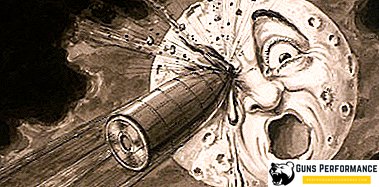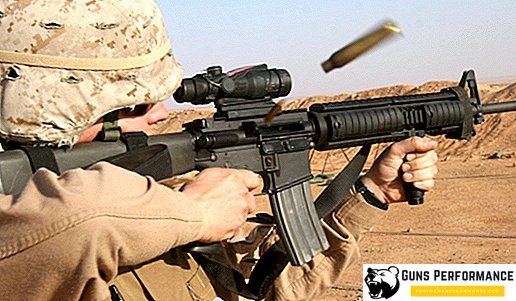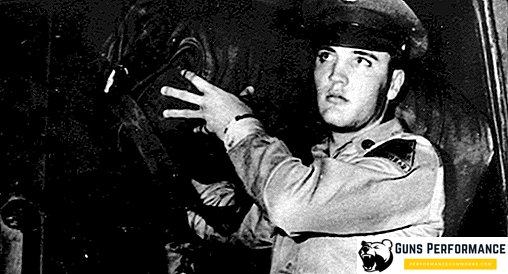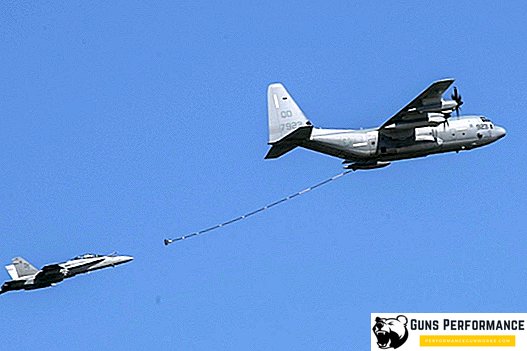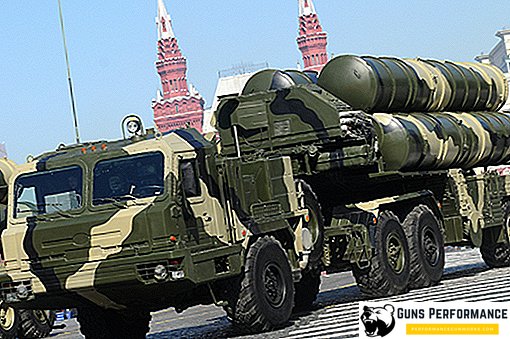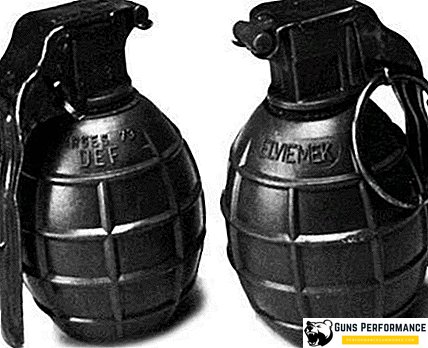The Persian Gulf and the Tigris and Euphrates interfluve have always been a crossroads of sharp political contradictions. Since the times of the Persian Empire, these lands have always crossed the trade, economic and political interests of the rulers. This contributed to the fertile climate and good geographical location of the region. With the advent of Islam to this territory, the alignment of forces has changed, adding religious severity to the social and social life of the peoples who inhabited the states of this region. Sunnis and Shiites, who later became the most numerous branches of Islam, occupied a dominant position between the rivers and in the Persian Gulf.
However, the peoples living in the present territory of Iraq were very far from the first steps towards independence and sovereignty. Until the 20th, neither the Constitution was known here, nor did they know about the status of the president as the head of state. The arrival of Europeans in the Persian Gulf zone gave a start to social, social and political changes that affected the state policy of a vast region.
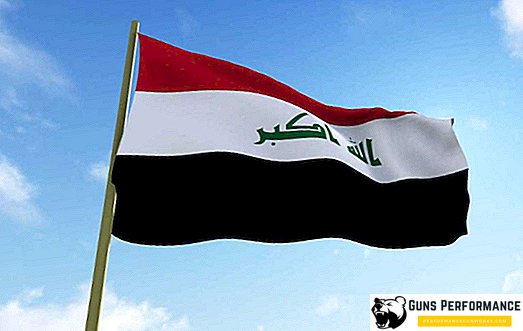
Iraq on the political map of the world
The first steps in the political system on the lands of present-day Iraq began to be made by the Arabs, who in the middle of the 7th century, under the leadership of Caliph Umar, occupied the territory of Mesopotamia. Islam was also spread with the Arabs. The main administrative and political centers of Iraq in the Early Middle Ages are the cities of Basra and Kufa. Over time, the residence of the caliphs is based in Kufa. During the reign of Caliph Ali, Shiism, which later became the largest religious community in these lands, became widespread in Iraq.

A follower of the Caliph Ali Al-Mansur in 763 lays the foundation stone for Baghdad, the ancient capital of Iraq, which became the main socio-political center of the entire Middle East. Under the Abbasid dynasty, Baghdad and the Arab Caliphate reached the peak of their power, but already in the new millennium the local nobility lost the reins of government. First, the Iranian dynasty of Buyid was strengthened in Iraq, and later the Seljuk Turks were established here. The once mighty Arab empire fell in 1258, not resisting the blow of the Mongols. Caliph was killed by invaders, and the rich and luxurious eastern capital of Baghdad was set on fire and destroyed.
Over the next one hundred years, the Mongolian Hulaguid dynasty ruled the lands of Iraq, which practically nullified the elements of the Arab state. From this moment begins the mess with the change of political regimes that come to the country at the tips of the swords of foreign invaders.
The short period of the reign of the rulers, who had established themselves with the arrival of Tamerlane, was replaced by the establishment in Iraq of the reign of a number of Turkic dynasties. At first, representatives of the Kara-Koyunlu dynasty seized the throne in Baghdad, and then the entire control system in the country passed into the hands of the Safavid dynasty. The Ottoman Turks put an end to an independent reign in Iraq, including in 1534 the country as part of their vast empire. For a long five hundred years, Mesopotamia becomes a common province of the Ottoman Empire, and Baghdad loses the status of the capital city, becoming the provincial trading center of the Middle East.

Iraq in the 20th century: first steps towards its own statehood
Ottoman rule, which was established on the shores of the Tigris and Euphrates, brought practically nothing to the development of Iraq as a state. Being in the status of an imperial province, the interfluve and part of the Arabian Peninsula were the most backward possessions of the empire. The main income items in these regions were agricultural products. Part of the funds for the maintenance of Islamic shrines came to the province from Constantinople. The real power was in the hands of the governors appointed by the Turkish sultans.
Only at the end of the 19th century, with the beginning of the administrative reform that embraced the great Ottoman Empire, transformations began in Iraq. The reforms concerned primarily the public administration system. The ultimate goals and objectives pursued as a result of the reform envisaged Iraq’s gaining autonomy within the empire. However, the weakening of the central government that emerged at the beginning of the 20th century slowed down the process, leaving the administrative apparatus on the territory of the province without major changes.

In the future, under the influence of political processes in the world, Iraq becomes the scene of military and political clashes between two empires - Ottoman and British. With the beginning of the formation in Europe of two centers of political influence, Turkey joined Germany and Austria-Hungary. This situation in no way satisfied Britain, who preferred to have the loyal authority of the Turkish Sultan and thus control the Bosphorus, Dardanelles, Suez Canal and the Persian Gulf sea straits. Iraq in the policy of Great Britain occupied one of the leading places. This was also due to the fact that the first oil deposits were discovered in the territory of Iraq, in the northern part of it at the end of the 19th century. As soon as World War I began, British troops entered the country. By 1918, when Turkey had practically lost the war, the entire territory of Iraq was occupied by British troops.
The Treaty of Sevres, signed in 1920, defeated by Turkey and representatives of the allies, marked the end of the centuries-old Ottoman Empire. From this point on, all the provinces of the once glorious Porte headed for self-determination. Iraq as part of the three vilayets of Basra, Baghdad and Mosul was in the composition of the mandated territory, which the United Kingdom received under the control of the League of Nations. In 1921, under the supervision of the British occupation forces and the military administration, the Kingdom of Iraq was proclaimed. Formally, the new state was headed by King Faisal. There was a bicameral parliament in the country, but in fact the entire system of state and administrative administration was completely dependent on the British colonial authorities. In those years, there was no need to talk about any state independence of the Iraqi state. The British tried to tenaciously hold in their hands the region, which gives the main oil reserves for the British Empire. Even the entry of Iraq into the League of Nations in 1932 did not bring the country the expected freedom and sovereignty.
Kingdom of Iraq and the transition to the Republic
The first Iraqi state fairly quietly existed until 1941. After the German Third Reich gained strength, a coup d'état took place under the influence of German agents in Iraq. The legitimate monarch was forced to flee the country, after which Iraq for thirteen days became the scene of an armed confrontation between the British army and the pro-German Iraqi army. Having achieved a victorious result, Great Britain established its control over the entire territory of the kingdom. Formally, royal power was restored, but now all the threads of government, the economy of the state and its foreign policy was in the hands of the British.

The end of the Second World War did not bring Iraq significant changes in the status of the state and in the management system. On the contrary, with the end of hostilities, the oil-rich region was completely under the control of the countries of Western democracy. Britain and the United States were able to force King Faisal to sign the Baghdad Pact, according to which Iraq became part of a military-defense alliance, influenced by the policies of the United States and Great Britain. In this state, the kingdom existed until 1958, when King Faisal’s political regime was overthrown during the July revolution. A group of young and ambitious officers of the Iraqi army who were members of the political group "Free Officers" organized a military coup in July 1958, initiating republican rule.
During the revolutionary events the conspirators killed King Faisal, the regent and eliminated the prime minister. In fact, the real power in the country passed into the hands of the military, headed by Brigadier General Abdel Kerim Kasem. Formally, the head of state was a colleague of Kasem Mohammed Najib al-Rubai, who headed the Sovereign Council. Despite this, Kasem, using his own authority, sought to single-handedly rule the state, leading the government of the Iraqi Republic. In parallel with the post of prime minister in his hands was the defense department.

The military regime established in the country quickly lost its republican features and acquired forms of military dictatorship. In foreign policy, Iraq focuses more on the countries of the communist bloc. After the withdrawal of Iraq from the Baghdad Pact in 1961, British troops leave the country. Despite the successes achieved in the foreign policy arena, inside the country the power of the military remains shaky. In the north of Iraq, the Kurds became active, having managed to create Free Kurdistan as a result of the 1961 uprising. In the rest of the state, the dictatorship of the military could not fully control either political or social life.
Another coup d'état occurred in February 1963, putting an end to the military dictatorship. The Arab Socialist Renaissance Party (BAAS), which has been in the shadow for a long time, comes to power.
Iraq during the reign of the military junta and the Baathists
The 1963 coup has pushed Iraq into political repression. The Baathists who came to power began to settle scores with representatives of the military administration and with pro-communist and socialist forces. Former head of state, Prime Minister Abdel Kerim Kasem was executed. Saddam Hussein returns to the country from emigration, becoming in the first days after the military coup a deputy chairman of the Revolutionary Council. The real power in the country was seized by one of the leaders of the Baath Party Ahmed Hassan Bakr.

Despite the active struggle against the Communists and their predecessors, the Baathists failed to maintain unity in the ranks of their party. The aggravated social and social situation caused by disagreements of the ruling elite and local nobility, the inability of the political regime to achieve a solution to the Kurdish issue pushed the country to another political crisis. The wing of the Ba'ath Party, headed by Abdel Salam Aref, overthrows the Bakr regime, establishing another military dictatorship. The current head of state, Ahmed Hassan Bakr, escapes from the country, while his deputy for the leadership of the Revolutionary Council, Saddam Hussein, has to go to prison.

For five years, the country again lived in a military dictatorship. Instead of the leader of the military coup Abdel Salam Aref, who died in a plane crash, his brother, Abdel Rahman Aref, becomes president of Iraq. He was at this post and at the post of Prime Minister of Iraq until 1968, when the Ba'ath Party came to power again.
Returning to power, Ahmed Hassan Bakr became president of the country, heading parallel to the government of the Republic. Saddam Hussein is assigned a political role, which was to lead the Revolutionary Council as deputy chairman. Saddam Hussein was in charge of managing the work and activities of the internal party and state security services. In 1968, the country receives a permanent Constitution, in accordance with which the head of state is the president, who is vested with broad powers.

President Ahmed Hassan Bakr held the presidency from 1968 to 1979, ending his career by forcible retirement. Saddam Hussein became the successor of the fourth Iraqi president, becoming at the same time the leader of the Ba'ath Party. In the political history of Iraq began the era of Saddam Hussein.
Iraq’s Fifth President - a country's political leader or dictator
As head of the Iraqi security service and deputy chairman of the Baath Party, by the end of the 1970s, Saddam Hussein concentrated all his power in his hands. It remained only to formalize their positions and lead the country. In 1979, Hussein became president of the country. From this moment begins the long, for 24 years, period of rule of the most charismatic leader of Iraq in its entire history.

When he came to power, Saddam set about eliminating all political opponents. A year after taking office, the fifth president, in addition to being chairman of the Iraqi Revolutionary Command Council, heads the government. Huge powers, concentrated in the hands of one person, became the pretext for establishing a dictatorship in the state.
The personality of Saddam Hussein is rather contradictory. On the one hand, Iraq during the rule of Saddam Hussein becomes the leader of the Arab world. The army of Iraq was considered in the 1980s as one of the best-performing and strongest in the world. In the economic sector, the fifth president also managed to do quite a bit. Almost 50% of the oil industry under Hussein was nationalized. Iraq, with its huge reserves of black gold in the 1980s, is among the world's largest oil suppliers. However, unlike the ruling elite, who are swimming in luxury, the welfare of Iraqis continues to remain at a rather low level. The residences of Saddam, which resemble the magnificent palaces of the ancient oriental rulers, look significant in this respect.

On the other hand, Saddam Hussein, occupying the highest state posts, quickly transformed into a dictator. During the years of his rule in Iraq, perhaps the most authoritarian political regime in the world was created. The foreign policy ambitions of Hussein went far beyond the framework of international law. First, the bloody Iran-Iraq war was unleashed, which lasted 8 long years, from 1980 to 1988. Then came the turn of the restless Kurds, who were followed by the Saddam regime with an iron roller of repression. The apotheosis of Hussein’s political career was the invasion of Iraqi troops in 1990 into Kuwait.
The result of the rash foreign policy of the fifth Iraqi president was the military defeat of the Iraqi army by the international coalition. Baghdad was imposed by severe economic sanctions, and the northern regions of the country, inhabited by Kurds, came under international control. The events described have greatly undermined the country's economy. The political weight of Iraq in the Arab world and in the international arena has been undermined.
From this moment on, the quiet life for the Iraqis is over. Having received resistance from the international community, Hussein focused on the struggle on the domestic front. In 1994, another wave of civil disobedience begins in Iraqi Kurdistan. An attempt to quickly pacify the Kurds ended in failure for the Baghdad regime. Over the next four years, northern Iraq becomes the scene of a bloody war between Kurdish troops and the Iraqi army. The last phase of armed civil confrontation was distinguished by extreme cruelty on the part of the central authorities. The final point in the protracted internal conflict was the use of chemical weapons by the Iraqi army against the Kurds. Since then, the regime of Saddam Hussein is outlawed, the country becomes a "rogue state." To the increased economic sanctions, added international isolation of Baghdad.

In 2003, the efforts of the international coalition ended the reign of the fifth president of Iraq. As a result of the invasion of the coalition forces, the regime of Saddam Hussein was overthrown. After a long search, the former head of state was captured by American forces and imprisoned. In 2004, the tribal former Iraqi dictator was transferred into the hands of Iraqi justice. For two years, there was a trial, which ended on July 27, 2006 with a death sentence. Saddam Hussein, the fifth president of Iraq, who ruled the country completely for 24 years, was executed on December 24, 2006.
Iraq after Hussein
After the overthrow of the regime of Saddam Hussein, the political and social-social situation in the country changed dramatically. The allied forces could not fully establish military control over the country, and the current interim Iraqi administration lost the threads of government control.

From June 2004 to April 2005, the Acting Head of State performed Ghazi Mashal Ajil Al-Yavar - Chairman of the Revolutionary Council of Iraq. In 2005, the country receives a new Constitution, in accordance with which Iraq is declared a federal parliamentary republic. Функции президента с этого момента носят чисто декларативный и представительский характер. Президентский срок составляет четыре года, а продолжительность президентских полномочий в одних руках ограничивается двумя президентскими сроками. В соответствии со статьями Основного Закона президент Ирака имеет следующие полномочия:
- является гарантом Конституции;
- является Верховным Главнокомандующим ;
- выступать защитником веры, целостности и суверенитета страны;
- представлять Ирак на международной арене;
- контролировать деятельность всех трех ветвей власти.
В 2005 году в Совете Представителей проходят выборы главы государства, по результатам которых высший государственный пост в государстве получает Джаляль Талабани. Годы правления шестого президента страны - 2005-2014.

Ныне действующий глава государства Фуад Масум занял президентский пост в июле 2014 года. Интересная деталь: оба последних президента Ирака являются представителями Патриотического Союза Курдистана. С падением режима Саддама Хусейна сунниты утратили главенствующее положение во внутренней политике.


